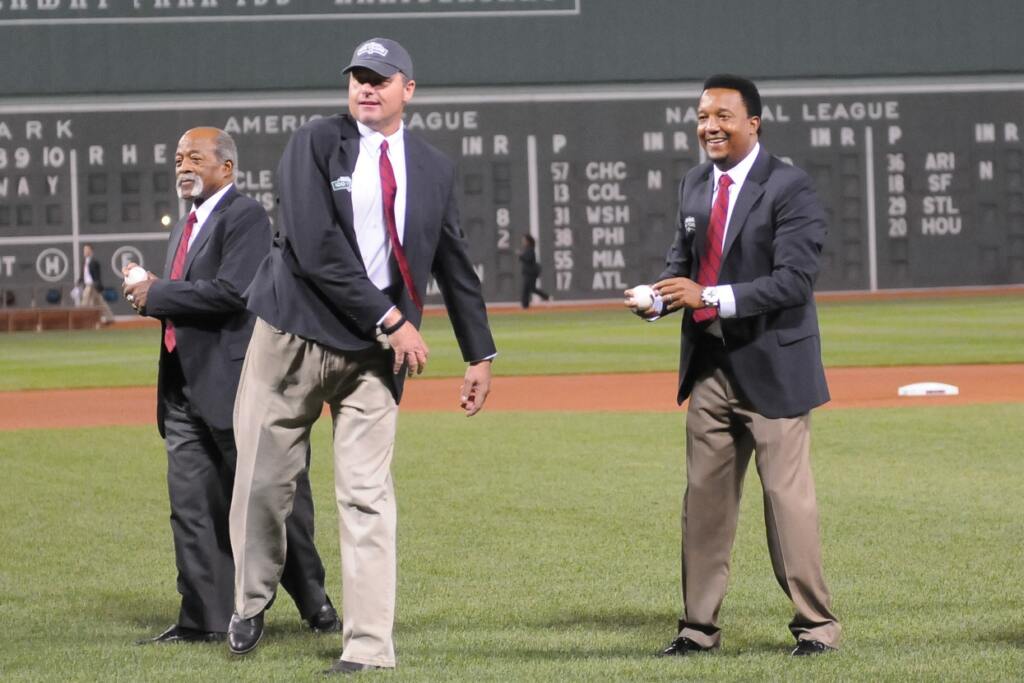Mazz: Garrett Crochet has his contract and the Red Sox now have their nucleus
Garrett Crochet has his contract. The Red Sox have their nucleus. And we are once again reminded of the approach that has once again defined Red Sox ownership over the last 20-25 years.
If you can’t build it, buy it.
OK, so maybe the Red Sox really didn’t have a choice, especially after trading away two first-round selections (catcher Kyle Teel and outfielder Braden Montgomery) and two other minor leaguers (pitcher Wikelman Gonzalez and infielder Chase Meidroth) in exchange for Crochet last December. You just don’t make that kind of trade unless you intend to go all in, which the Sox have done with last night’s report that Crochet has agreed to a six-year, $170 million contract that will keep him in Boston for the foreseeable future. But as an old sports editor suggested many years ago, something still qualifies as news even if you suspected it was coming. And with the Red Sox, as we all know, you can never quite be certain.
That said, for an organization that has long carried the stigma of of being unable to develop pitching, the Red Sox have nonetheless had a succession of aces unlike many organizations in baseball. Pedro Martinez, Josh Beckett, Curt Schilling and Chris Sale all have been acquired by trade over the last 25+ years, which is no small feat. Beginning with the drafting and developing of Roger Clemens in the 1980, the Red Sox have produced a line of kings akin to the House of Tudor.

To wit: Clemens begot Martinez, who begot Schilling, who begot Josh Beckett, who begot Jon Lester, who begot Sale, who now has begotten (we think) Crochet. Since Clemens blossomed in 1986, the Red Sox have won more games than all but three major league franchises – the New York Yankees, Los Angeles Dodgers and Atlanta Braves – and they trail only the New York Yankees in World Series titles, 5-4. That period has covered the ownerships of Jean Yawkey, the Yawkey Trust and John Henry; and the reigns of general managers Lou Gorman, Dan Duquette, Mike Port (interim), Theo Epstein, Ben Cherington, Dave Dombrowski, Chaim Bloom and Craig Breslow.
For certain, there have been some bad years in there and, truthfully, too many of late. But you get the idea. The Red Sox have generally been one of the best teams in baseball for a long time now, and the real constant hasn’t been ownership or management.
It’s been a bona fide ace.
And so, is Crochet that guy? It’s a fair question. Entering tomorrow’s start against the Baltimore Orioles, the 2025 Red Sox are already 1-0 behind their ace, 0-4 the rest of the time. The season is obviously still young. Still, the 25-year-old Crochet has just 33 career starts and nine wins to his name, which means the Red Sox are certainly taking on some measure of risk – maybe even a lot of it. In so doing, they are banking on the prime years of 6-foot-6, 245-pound moose who throws most everything hard, which should simultaneously make you gawk and gasp.
Notes Passan: “No pitcher who received a nine-figure contract had done so with fewer than 800 innings. That Crochet did with not even one-third of that speaks to the impression the 6-foot-6, 245-pound fireballer made on the Red Sox during his short time with the team.”
Well, yes and no. The truth is that Crochet made his impression before the Red Sox acquired him. They wouldn’t have given up all that talent in the trade if they weren’t then planning to secure him.
So where do this all go from here? That seems pretty simple: boom or bust. With Crochet locked up, the Red Sox now a collection of 25-year-olds (or younger) that includes: Crochet, Kristian Campbell, Roman Anthony, Marcelo Mayer, Triston Casas and Wilyer Abreu, among others. If that group is as good as the Sox have been hyping, there should be multiple runs at a World Series in the next five years, give or take. And if the Sox don’t get careless or too caught up in self-adulation – they can extend that window even further.

In the end, should you be celebrating the signing of Crochet, even if you suspected it was coming? Yes – and if no other reason than this: securing him means that the sox have many of their big pieces in place for the next era in Red Sox history, a stage that recently didn’t seem so certain. Back in 2009, then-GM Epstein took much criticism for using the term “bridge year”; by contrast, the most recent bridge took closer to 5-6 years. Quite literally, the Zakim project (above) was faster.
Remember: the last time the Red Sox introduced a new era like this – the nucleus then was Xander Bogaerts, Mookie Betts, Jackie Bradley and Rafael Devers, among others – they signed David Price and they still weren’t good enough. So they brought in Sale. That process, like this one, started with a GM (Cherington) who proved too conservative. Now Epstein is back in the organization and, it seems, looking over “chief” executive Craig Breslow, all at a time when the Red Sox construction project looks at least a little like that of Epstein’s 2016 World Series champion Chicago Cubs.
But, whatever, however and whoever … the Red Sox are now in a better place than they have been in a while, 1-4 or otherwise. The roster isn’t perfect, but the ace is in place. No more complaining from uniformed personnel – the manager, coaches or players – that they don’t have the pieces to compete. As constituted, the Red Sox aren’t world beaters. But they’re plenty good enough to be one of the better teams in baseball and make the playoffs.
Now they just need to start winning some games.




